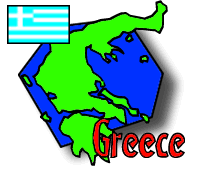Person of the Day: George Tselikas ![]()
Place of the Day: Pavlos Vrellis Museum of Greek History
- What a price
- To pay
- I don't know.
- What I believe
- I will pay.
- It is worth it.
- To die even
- for it, standing,
- It is worth it.
- Because it is strength.
- All is done
- for it.
- They mention it,
- they call it,
- but I believe
- in it, LIBERTY.
- To pay
Tech Fact of the Day: Strong Winds
Group Dispatch, March 26

Questions? Ask Corinne ![]() !
!
Return to Fast Facts
 |
 |
 |
 |
 |
|
Itinerary/ Journal |
Discussions |
About Greece |
eDscape Projects |
Scrapbook |
|
|
|
|
|
|
|
Copyright 1997-99 BikeAbout. All rights reserved.

